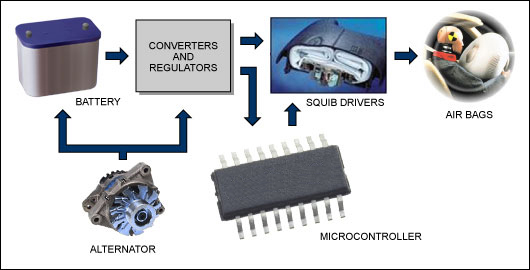As automobiles continue to add more electronic devices, a major challenge facing electronic control module designers is how to improve product performance within a limited power budget. Today's cars include numerous electronic systems, such as stereo and infotainment systems, wiper controls, light drive systems, and safety features such as airbags. These system requirements all rely on the car's battery for power, and designers must reduce the power consumption of each electronic system as much as possible, especially after the car is turned off and parked in the parking lot.
After the car's engine is turned off, the battery typically still needs to power multiple systems. In order to reduce the power consumption in this case, the power management module introduces several power saving modes: shutting down the microprocessor clock, shutting down the converter circuit through the enable input, these are the two most common examples. However, some devices and functions—for example, remote keyless entry (PKE) and security systems—should always remain operational, regardless of whether the power source comes from a generator or battery. Figure 1 shows a typical airbag power module.
This article describes a reference design that uses the MAX15006 / MAX15007 linear regulator to reduce automotive air bag quiescent current. In addition to ultra-low quiescent current, these devices are capable of withstanding load dumps up to 45V, making them ideal for harsh automotive operating environments. In addition, they also have functions such as low dropout voltage, wide input voltage range, thermal and short-circuit protection, enable input, etc., making them an ideal choice for automotive airbag power supply modules.

Figure 1. Typical automotive airbag power module
All reference designs on this site are sourced from major semiconductor manufacturers or collected online for learning and research. The copyright belongs to the semiconductor manufacturer or the original author. If you believe that the reference design of this site infringes upon your relevant rights and interests, please send us a rights notice. As a neutral platform service provider, we will take measures to delete the relevant content in accordance with relevant laws after receiving the relevant notice from the rights holder. Please send relevant notifications to email: bbs_service@eeworld.com.cn.
It is your responsibility to test the circuit yourself and determine its suitability for you. EEWorld will not be liable for direct, indirect, special, incidental, consequential or punitive damages arising from any cause or anything connected to any reference design used.
Supported by EEWorld Datasheet